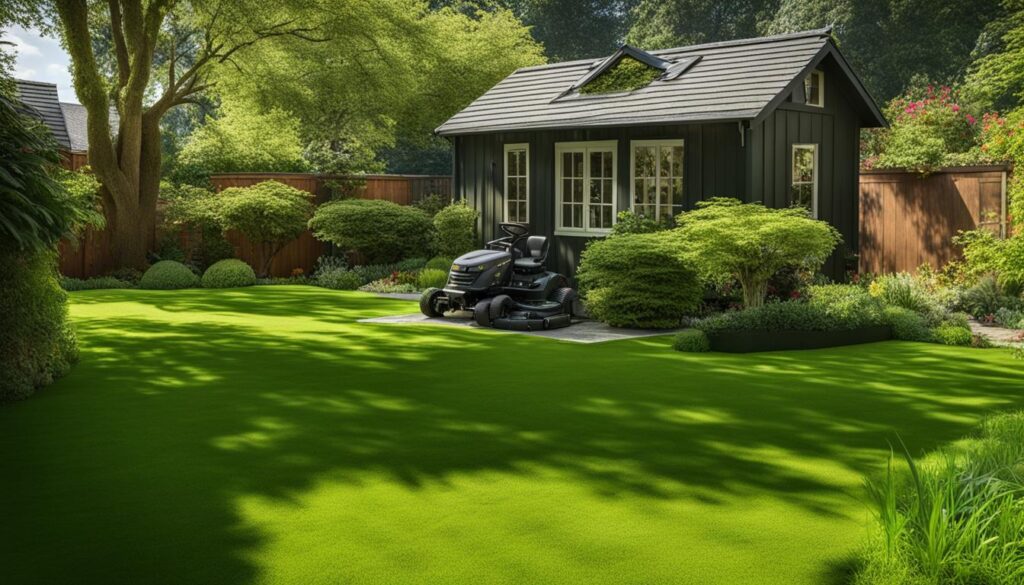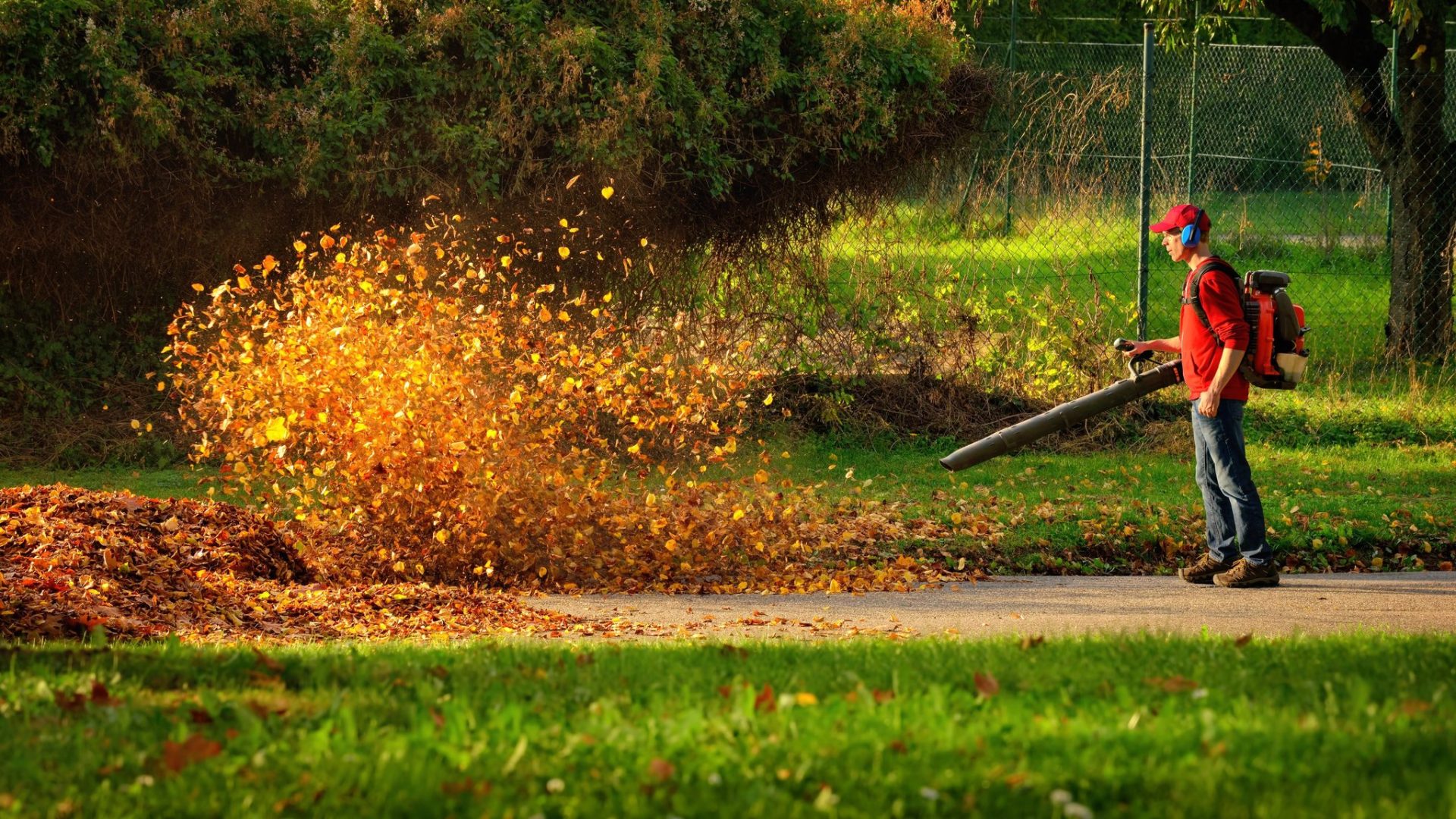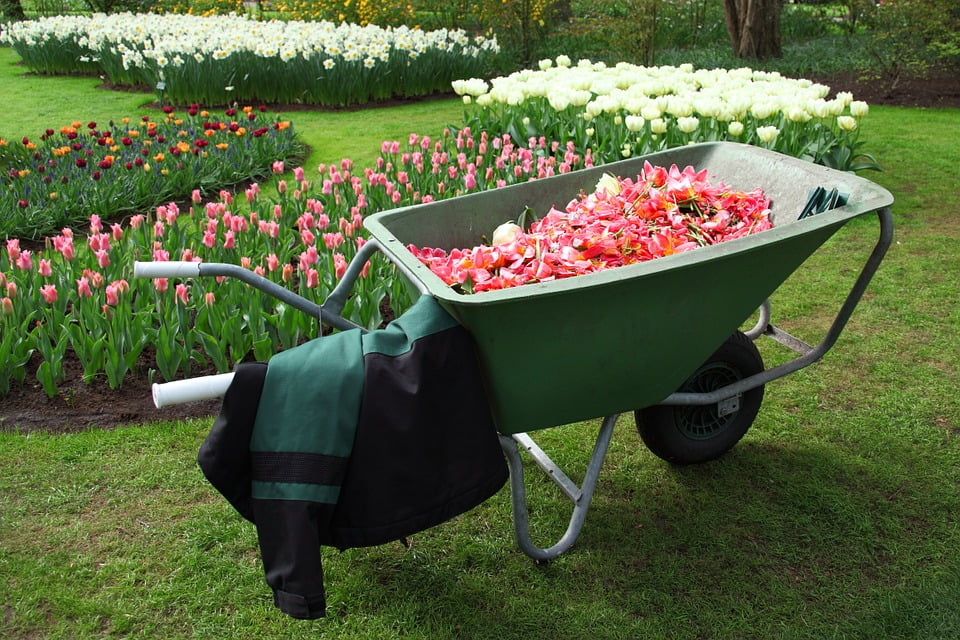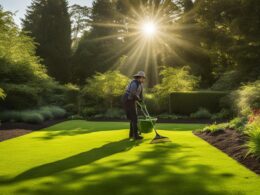Growing grass in shady areas can be a challenge, but with the right knowledge and practices, you can achieve a lush lawn even in low-light areas. Specialized shade-tolerant grass blends, such as rye, fine and tall fescues, zoysia, and St. Augustine, thrive in four hours of dappled sun or partial shade. To successfully grow grass in shade, it’s important to focus on selecting the right grass seed, pruning trees to allow sunlight to reach the grass, aerating the soil for better water and nutrient absorption, adding organic matter like compost, and following proper watering and mowing practices.
Key Takeaways:
- Choose shade-tolerant grass blends for areas with limited sunlight.
- Prune trees and thin the canopy to increase sunlight penetration to the grass.
- Aerate the soil to improve water and nutrient absorption.
- Add organic matter like compost to provide essential nutrients for grass growth in shade.
- Water and mow properly to maintain a healthy lawn in shady areas.
The Importance of Choosing the Right Grass Seed for Shade
Growing grass in shade can be challenging, but selecting the right grass seed is a crucial step towards success. When it comes to shade-tolerant grass blends, there are several factors to consider to ensure the optimal growth of your lawn.
Look for grass seed blends that are specifically formulated for shade conditions. These blends often include a variety of grass types known for their ability to thrive in low-light areas. Varieties such as rye, fine and tall fescues, zoysia, and St. Augustine are excellent choices for shade-tolerant lawns.
Quality is key when it comes to grass seed. Invest in high-quality grass seed that has a germination rate of at least 70 percent. This ensures that a significant majority of the seeds will successfully sprout and establish a healthy lawn. Additionally, choose grass seed with low weed seed and inert material content to minimize unwanted plants and promote the growth of your desired grass.
By choosing shade-tolerant grass blends and high-quality grass seed, you provide your lawn with a diverse range of grasses that can thrive in shade. This increases your chances of achieving a vibrant and lush lawn even in areas with limited sunlight.
Optimal growth starts with the foundation, and selecting the right grass seed is an essential part of the process. Take the time to research and choose the best seed for your shade-tolerant lawn, and you’ll be rewarded with a beautiful green space that can withstand the challenges of shaded environments.
Pruning Trees and Increasing Sunlight Penetration
To increase sunlight penetration to the grass beneath trees, it’s important to prune limbs and thin the canopy. By removing lower branches and thinning the canopy, you allow sunlight to slant in beneath the branches, creating opportunities for the grass to receive more light. Consider consulting a certified arborist for pruning mature trees. By properly pruning and maintaining trees, you can create a more favorable environment for grass to grow in the shade.
Aeration for Improved Soil Conditions
Shady lawn areas can greatly benefit from soil aeration. Aeration involves creating holes in the soil, which allows for better water and nutrient absorption by exposing the root zone of the grass to the necessary elements. Additionally, aeration promotes better air circulation in the soil, providing optimal conditions for grass growth in shade.
For cool-season grasses, it is recommended to aerate in late spring or early summer, while for warm-season grasses, early fall is the ideal time. The timing is crucial to maximize the benefits of aeration and support the specific grass type’s growth cycle.
The most effective tool for aeration is a core aerator. This machine removes small plugs of soil from the lawn, creating the necessary openings. By using a core aerator, you can ensure that the aeration process is thorough and efficient, providing the grass with the best opportunity to thrive in shade. However, in small shady areas, a digging fork can also be used as a quick and cost-effective alternative to aerate the soil.
Regular aeration is key to maintaining optimal soil conditions for grass growth in shade. By incorporating this practice into your lawn care routine, you can help create an environment where the grass can effectively absorb water, nutrients, and air, leading to a healthier and more vibrant lawn.
A core aerator helps create holes in the soil to improve water and nutrient absorption for grass growing in shade.
Adding Organic Matter for Nutrient Boost
Grass in shady areas requires less fertilizer than grass growing in full sun. To give your thin and shady lawns a nutrient boost, it’s beneficial to spread a thin layer of organic matter in the form of compost during the early spring.
This compost provides essential nutrients that encourage healthy growth and support the development of a lush lawn. When applying the compost, make sure to do so after aerating or before overseeding thin and shady turf. It’s important to ensure that the layer of compost is thin enough to still see the grass blades beneath.
To evenly distribute the compost, use a push broom and work it between the individual grass plants. This will help the organic matter penetrate the soil and provide nourishment to the roots of the grass. By adding organic matter, you’re taking a natural and effective approach to support the growth of grass in shade.
Proper Watering Practices for Shady Lawns
Shady lawns have different water requirements compared to sunny lawns. While a shady lawn may not use water as quickly as sun-drenched turf, it’s important to ensure that the grass receives adequate moisture. If your shady lawn is shaded by a building, you may not need to water as frequently as a lawn shaded by trees. However, if your shady grass is under trees, you can’t rely solely on rainfall to provide enough water.
Watering deeply but infrequently is key to encourage deep root growth in shady lawns. Deep watering promotes stronger, healthier roots that are better equipped to absorb moisture from the soil. Instead of giving your shade-dwelling grass frequent light waterings, water it deeply once a week. This helps prevent shallow root growth and reduces the risk of disease.
When adjusting your watering schedule for shady lawns, it’s important to consider the type and intensity of shade your lawn receives. If the shade is light and dappled, the grass may still receive a fair amount of sunlight, and its water needs may be closer to those of a sunny lawn. However, if the shade is dense and the grass receives limited sunlight, you may need to water more frequently to compensate for the reduced evaporation rate and ensure sufficient hydration.
By carefully managing your watering schedule, you can help your shady lawn thrive. Monitor the moisture levels in the soil and adjust your watering frequency accordingly. Remember to water deeply to encourage deep root growth and be mindful of the shade conditions in your lawn. With proper watering practices, your shady lawn can remain healthy and vibrant.
Proper Mowing and Maintenance for Shady Lawns
Proper mowing and maintenance practices are crucial for the health and growth of grass in shade. When it comes to mowing height, it’s important to keep the grass in shady areas slightly taller, around 1/2 to 1 inch higher than grass in sunny areas. This allows each grass blade to have a larger area for photosynthesis, promoting healthy growth and better tolerance to shade.
Avoid scalping shady lawn areas, as they may not recover well from being cut too short. By maintaining a slightly higher mowing height, you provide the grass with more surface area for energy production, allowing it to thrive and maintain a greener appearance even in shady conditions. Change the mowing height and pattern regularly to prevent soil compaction and ruts in the lawn.
In addition to proper mowing techniques, it’s important to reduce foot traffic in shady areas as much as possible. Grass that grows in shade has a harder time recovering from the stress caused by excessive foot traffic. To protect the grass in shady areas, consider installing stepping stones or a mulch path to create designated paths and preserve the integrity of the lawn.
Conclusion
With the right strategies and practices, it is possible to grow grass in shade and create a beautiful green space even in the darkest areas of your yard. By selecting shade-tolerant grass blends, pruning trees to increase sunlight penetration, aerating the soil for better water and nutrient absorption, adding organic matter like compost, following proper watering practices, and maintaining the right mowing height, you can achieve a lush lawn in low-light conditions.
Experiment with different techniques and adjust your approach based on the specific conditions of your shaded lawn. Remember that each lawn is unique, and what works for one may not work for another. By paying attention to the needs of your grass and providing proper care, your shaded lawn can thrive and become a vibrant oasis.
So don’t let shade discourage you from having a beautiful lawn. With these tips for shade-tolerant lawns, you can enjoy a lush, green landscape that enhances the aesthetics of your outdoor space. Implement these practices, monitor your lawn’s progress, and make any necessary adjustments along the way. Before you know it, you’ll have a healthy, thriving lawn that can withstand even the shadiest spots in your yard.
Can Expert Tips for Growing Grass in Shade Also Be Applied to Growing Moss?
Yes, expert tips for growing grass in shade can also be applied to growing lush green moss. Both require adequate moisture, proper soil pH, and the right amount of sunlight. Additionally, improving drainage and reducing foot traffic can benefit both grass and moss growth in shady areas.
FAQ
Can I grow grass in shady areas?
Yes, with the right knowledge and practices, you can achieve a lush lawn even in low-light areas.
What types of grass are shade-tolerant?
Shade-tolerant grass blends include rye, fine and tall fescues, zoysia, and St. Augustine.
How important is choosing the right grass seed for shade?
Choosing shade-tolerant grass blends with a high germination rate and low weed seed content is crucial for success.
Should I prune trees to increase sunlight penetration?
Yes, pruning trees and thinning the canopy allows more sunlight to reach the grass in shade.
What is the best method for soil aeration in shady areas?
Using a core aerator or a digging fork to aerate the soil improves water and nutrient absorption for grass in shade.
How can I add organic matter for a nutrient boost?
Spreading a thin layer of compost in early spring provides essential nutrients for grass growth in shade.
What are the proper watering practices for shady lawns?
Shady lawns require less water, but deep and infrequent watering is important to ensure adequate moisture.
What mowing and maintenance practices should I follow for shady lawns?
Keep the grass slightly taller, change mowing height and pattern, and reduce foot traffic to promote healthy growth.
How can I achieve a lush lawn in shady areas?
By selecting shade-tolerant grass blends, pruning trees, aerating the soil, adding organic matter, and following proper watering and mowing practices.











